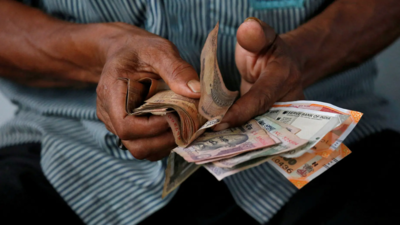
MUMBAI: The rupee suffered its largest decline in over four months, dropping 17 paise, or 0.2%, to close at 84.28 against the US dollar following Trump's victory.
Despite hitting a record low, the rupee performed relatively well compared to other currencies as the dollar strengthened significantly against global counterparts. Dealers said that RBI's intervention helped limit the rupee's decline. RBI governor Shaktikanta Das has said that regardless of the outcome of the US election and the potential spillover effects on the global economy, the Indian economy and financial sector are well-positioned and resilient enough to handle any external challenges.
"We are definitely impacted by what's happening in the rest of the world. But when it comes to our domestic market as a regulator, we are not bystanders. We are very much there in the market," said Das.
Despite RBI's reserve war chest of close to $700 billion, dealers said that the central bank will not be able to hold the exchange rate given the rate at which the dollar has appreciated against other currencies. The dollar index gained 1.8% as fears of tariffs and sanctions sent other currencies on a downslide.
The Mexican peso was the worst hit, depreciating to a two-year low. The euro dropped over 2% as the Eurozone was also seen as a primary target for trade wars under a Trump administration. The Chinese yuan declined 1.
1%- its biggest one-day drop since Oct 2022 - over fears that Trump would introduce steep tariffs. The South African rand was also among the hardest hit, dropping 2.2% from its previous close.
Become an Excel Pro in 2024! Learn Essential Excel Skills Today!.










